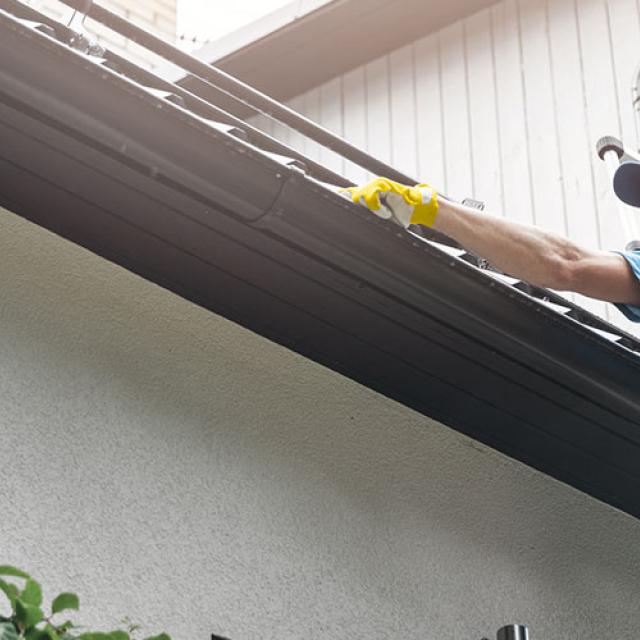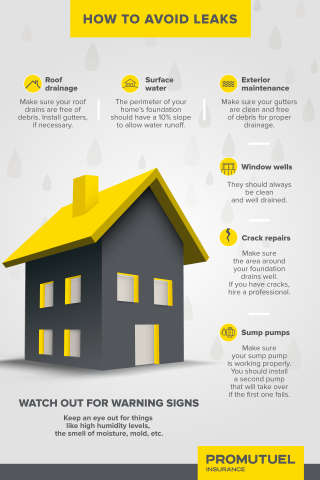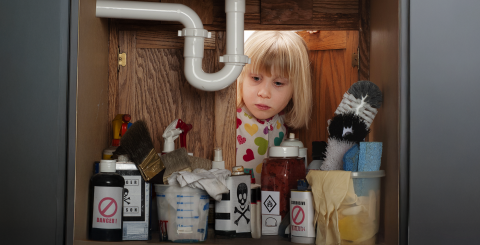Things to do in the fall to prevent water seepage

Did you know that fall is the best season for spotting and preventing water seepage? As you work through your fall home maintenance checklist, it’s important to take steps to avoid this troublesome and costly issue wherever possible. After all, an ounce of prevention is worth a pound of cure!
The proof is that water damage is the number one reason people file home insurance claims. To help you protect your home from a soggy catastrophe, we’ve got prevention and maintenance tips to add to your list this fall, so you can put the odds squarely in your favour
THE MANY PREVENTABLE CAUSES OF WATER DAMAGE
Water damage can happen in a number of different ways. Things get even more complex if you’re a condo owner: to keep water damage at bay in a co-owned property, each individual owner needs to do their part, as does the condo association. But no matter whether you’re a renter, owner, or co-owner facing a leaky washing machine hose or a broken water heater or a leaky roof, the causes are many and no one is immune.
On the upside, there are many things you can do to prevent water damage. To make it one of your missions this fall, read on!
Roof drainage
Water frequently gets in through the roof, which means you should always keep an eye on your drainage system. If you have a flat roof, the water needs to flow toward your storm sewer. Keep your roof drains free of debris, especially leaves. To get a better understanding of the various drainage systems for flat roofs and how they work, check out the handy information sheets from Régie du bâtiment (in French).
For sloping roofs, gutters are the go-to solution. You should have a horizontal extension at the end of your downspout or a deflector to send the water as far from the foundation of your home as possible. Check your gutters every fall to make sure they aren’t clogged. If they are, clean them out and consider installing a gutter guard to keep them from getting clogged again.
Surface water drainage
To ensure proper runoff of surface water, the ground should be graded at a 10% slope away from your foundation for at least the first 6 feet (1.8 metres). Remember that your downspout shouldn’t be connected directly to your French drain.
Fixing cracks
Those darn cracks and the water damage they can cause! You’ll need to fix them alright, but you should also know that the problem might not go away so easily. The water may creep back into the joints between your floor and foundation, or cause excess humidity in your basement.
The best fix is to make sure you have good drainage on your property, especially around your foundation. The idea is to make sure your building and property are designed to withstand water, rather than spend time trying to plug all the holes. Regardless of the type of crack, we recommend bringing in a professional. They’ll be able to figure out what you need to do to fix the problem and keep it from coming back.
Outdoor maintenance
Keep your gutters and drains clean and free of debris, so when a storm hits or the snow melts in the spring, the water is funneled away from your house.
Window wells
Make sure your window wells are clean and have proper drainage. Whenever you clean them, check that the sealant is still in good condition.
Basement drainage pump
If your runoff water gets pumped to the municipal storm water system, a ditch, or any other type of system, you need to pay attention to your pump. For one, it needs to be cleaned at least twice a year. So schedule a good fall cleaning! To make sure it’s working properly, run it as you pour water into the basin. It’s also a very good idea to install a second pump at a higher elevation so that it can take over if your primary pump fails.
If you’re connected to your municipality’s waterworks, consider getting a venturi pump as a backup for the main pump. It’s an emergency pump that works without electricity, using the water pressure in the municipal system. If you’re in an area that’s prone to power outages, there are pumps that are powered by 12‑volt batteries. You can also install a water sensor on your backup pump so that you’re alerted if your main pump stops working.
Things to watch for
If your basement seems humid or smells mouldy or if you see mould on walls, floors, or carpeting, there may be a problem with your drainage system. Call in a professional right away to figure out what the problem is and find a permanent solution to prevent future leaks.

WATER DAMAGE AND HOME INSURANCE
While there’s plenty you can do to prevent water damage, you’ll always need good home insurance. After all, to make a claim for water damage, you have to have the right coverage, which can come in the form of a basic policy or an endorsement.
Some accidental water damage is covered by your basic home insurance policy, particularly damage that involves a bathtub, dishwasher, or other household plumbing or appliance. In other situations, such as above-ground leakage, foundation leakage, or a sewer backup, you’ll need an endorsement to cover the damage. Since these types of repairs can be costly, it’s best to contact a damage insurance representative to go over your options.




